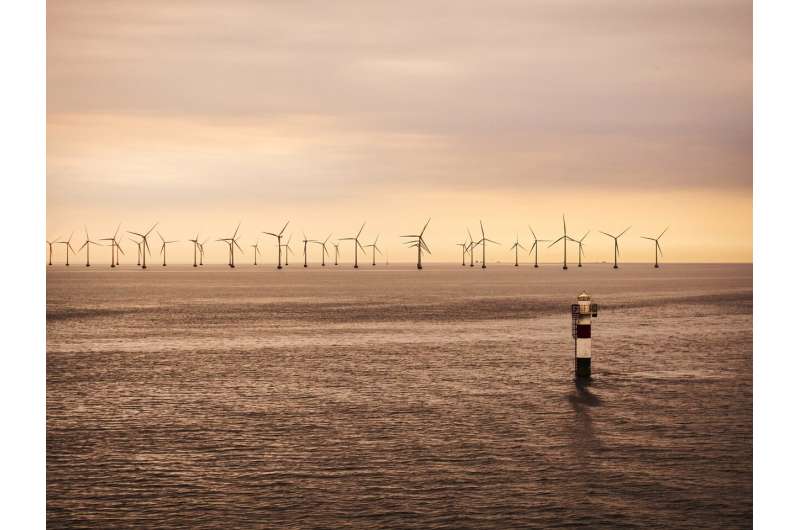
The U.K. government must kick-start the construction of large-scale hydrogen storage facilities if it is to meet its pledge that all electricity will come from low carbon sources by 2035 and reach legally binding net zero targets by 2050, according to a report by the Royal Society.
The report, "Large-scale electricity storage," published Sep. 8, examines a wide variety of ways to store surplus wind and solar generated electricity—including green hydrogen, advanced compressed air energy storage (ACAES), ammonia, and heat—which will be needed when Great Britain's supply is dominated by volatile wind and solar power.
It concludes that large scale electricity storage is essential to mitigate variations in wind and sunshine, particularly long-term variations in the wind, and to keep the nation's lights on. Storing most of the surplus as hydrogen, in salt caverns, would be the cheapest way of doing this.
The report, based on 37 years of weather data, finds that in 2050 up to 100 Terawatt-hours (TWh) of storage will be needed, which would have to be capable of meeting around a quarter of the U.K.'s current annual electricity demand. This would be equivalent to more than 5,000 Dinorwig pumped hydroelectric dams. Storage on this scale, which would require up to 90 clusters of 10 caverns, is not possible with batteries or pumped hydro.
Storage requirements on this scale are not currently foreseen by the government. Work on constructing these caverns should begin immediately if the government is to have any chance of meeting its net zero targets, the report states.
Sir Chris Llewellyn Smith FRS, lead author of the report, said, "The need for long-term storage has been seriously underestimated. Demand for electricity is expected to double by 2050 with the electrification of heat, transport, and industrial processing, as well as increases in the use of air conditioning, economic growth, and changes in population.
"It will mainly be met by wind and solar. They are the cheapest forms of low-carbon electricity generation, but are volatile—wind varies on a decadal timescale, so will have to be complemented by large scale supply from energy storage or other sources."
The only other large-scale low-carbon sources are nuclear, gas with carbon capture and storage (CCS), and bioenergy without or with CCS (BECCS). While nuclear and gas with CCS are expected to play a role, they are expensive, especially if operated flexibly.
Sir Peter Bruce, vice president of the Royal Society, said, "Ensuring our future electricity supply remains reliable and resilient will be crucial for our future prosperity and well-being. An electricity system with significant wind and solar generation is likely to offer the lowest cost electricity but it is essential to have large-scale energy stores that can be accessed quickly to ensure Great Britain's energy security and sovereignty."
Combining hydrogen with ACAES, or other forms of storage that are more efficient than hydrogen, could lower the average cost of electricity overall, and would lower the required level of wind and solar supply.
There are currently three hydrogen storage caverns in the U.K., which have been in use since 1972, and the British Geological Survey has identified the geology for ample storage capacity in Cheshire, Wessex and East Yorkshire. Appropriate, novel business models and market structures will be needed to encourage construction of the large number of additional caverns that will be needed, the report says.
Sir Chris observes that, although nuclear, hydro and other sources are likely to play a role, Britain could in principle be powered solely by wind and solar, supported by hydrogen, and some small-scale storage provided, for example, by batteries, that can respond rapidly and to stabilize the grid. While the cost of electricity would be higher than in the last decade, we anticipate it would be much lower than in 2022, he adds.